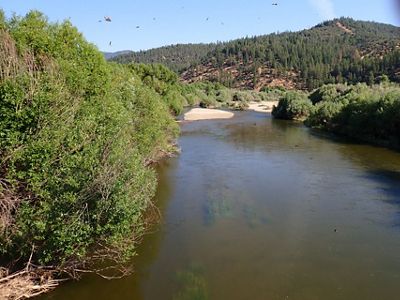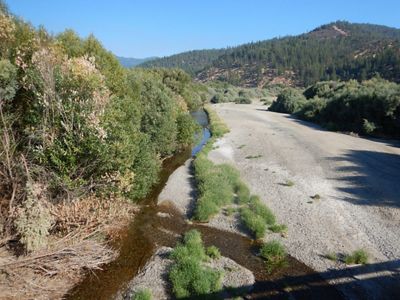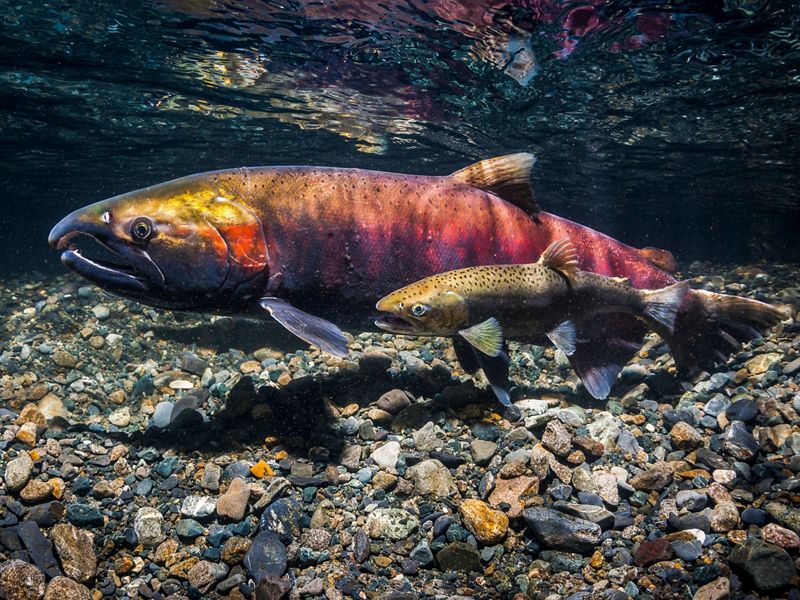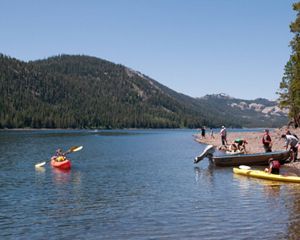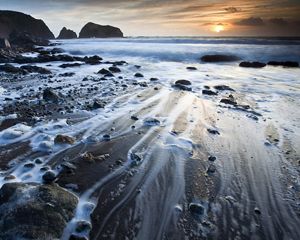Klamath Basin
California
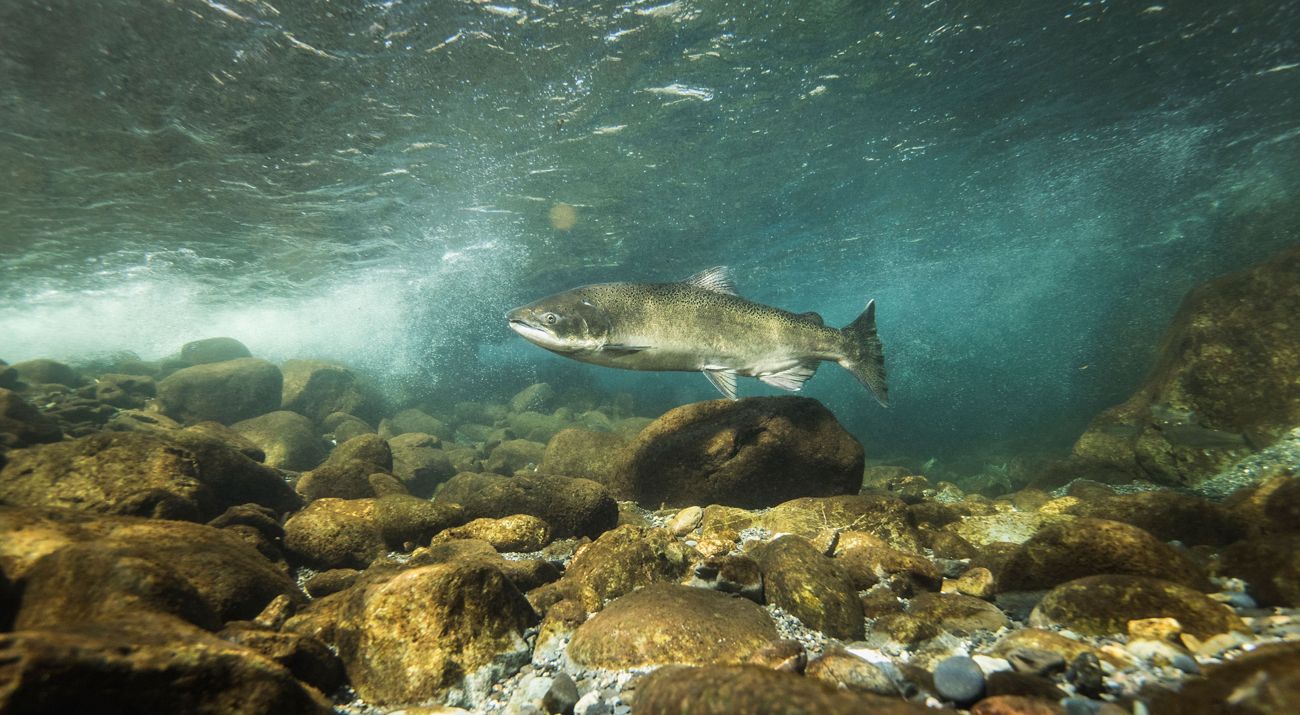
The Klamath River was once one of the greatest salmon runs on the Pacific coast.
Cutting a scenic swathe from the mountains of southern Oregon into California, the powerful Klamath River once teemed with so many salmon that locals claimed they could cross the river on the backs of the fish. These salmon have been an essential source of food and a spiritual touchstone for local Indigenous tribes in the region since time immemorial. TNC is employing a number of strategies to help the Klamath's salmon recover, secure the freshwater that nature needs and help ranchers and fishers thrive alongside nature.
Reviving a Historic Salmon Run
The Klamath River and its tributaries represented one of the greatest salmon runs on the Pacific coast. Over the past century, however, the population of spawning fish has dwindled due to inhospitable conditions. In the Klamath Basin, the Shasta River sported between 50,000 and 100,000 Chinook salmon per year. Today, only about 5,000 salmon return to the river.
In Siskiyou County, more than fish depend on water; ranchers and farmers share what is a limited water supply. Numerous species—some threatened—also make their home among the magnificent wetlands and forests of the basin, including Klamath River lampreys, western pond turtles, greater sandhill cranes and bald eagles.
Water diversions, dams, inefficient irrigation practices and other problems have diminished water quality and habitat in the Klamath area. TNC is working hard to reverse this trend, which has harmed both wildlife and humans, and we’re making real progress.
Acquisitions with a Twist
We’re employing a traditional approach along the Klamath River: acquisitions, but with a twist. We’re buying land with water rights so we can leave water instream. Sometimes that means we buy a whole farm, as we did with Miners Creek Ranch, a property located on a tributary to the Scott River that holds water rights.
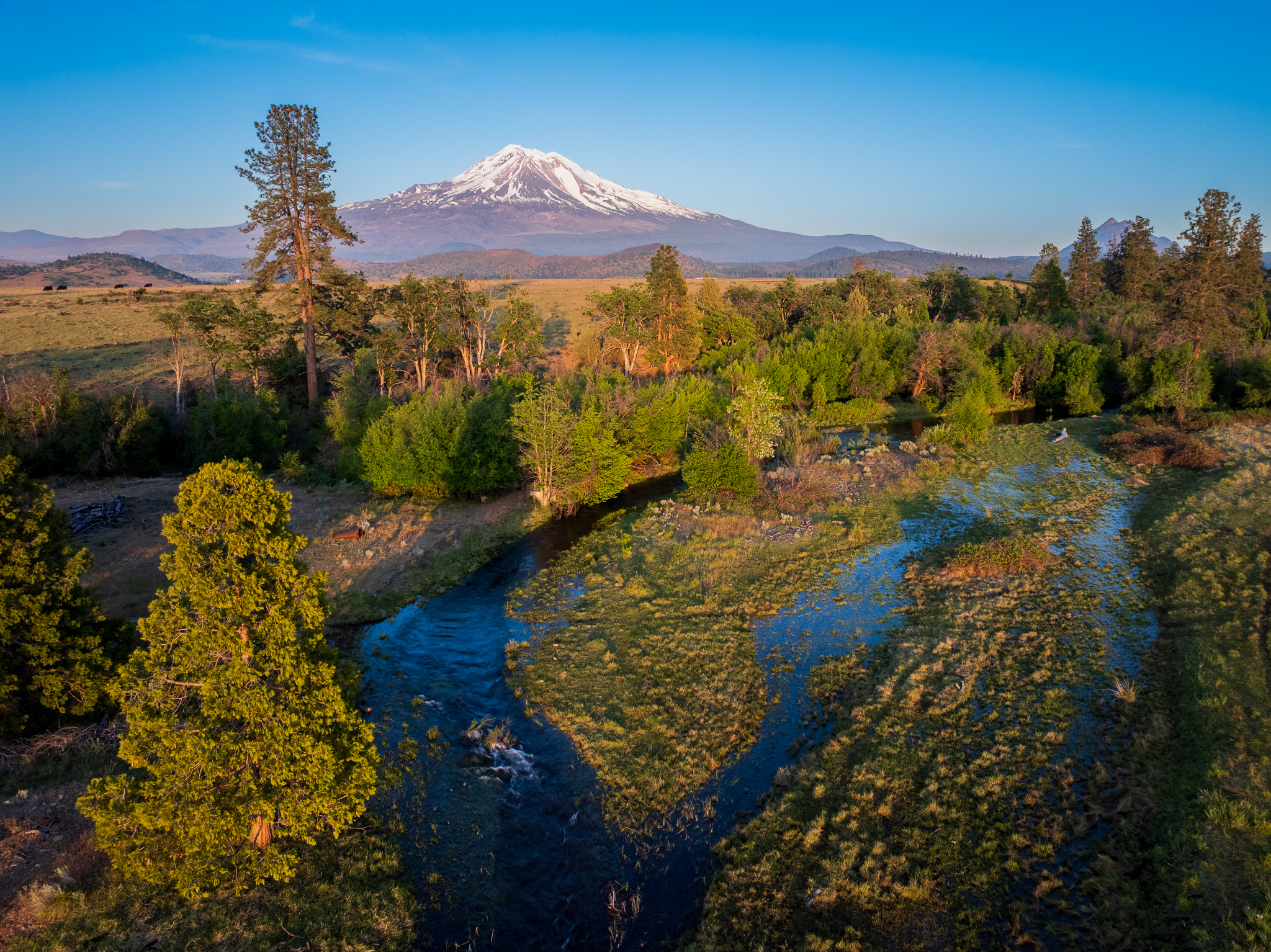
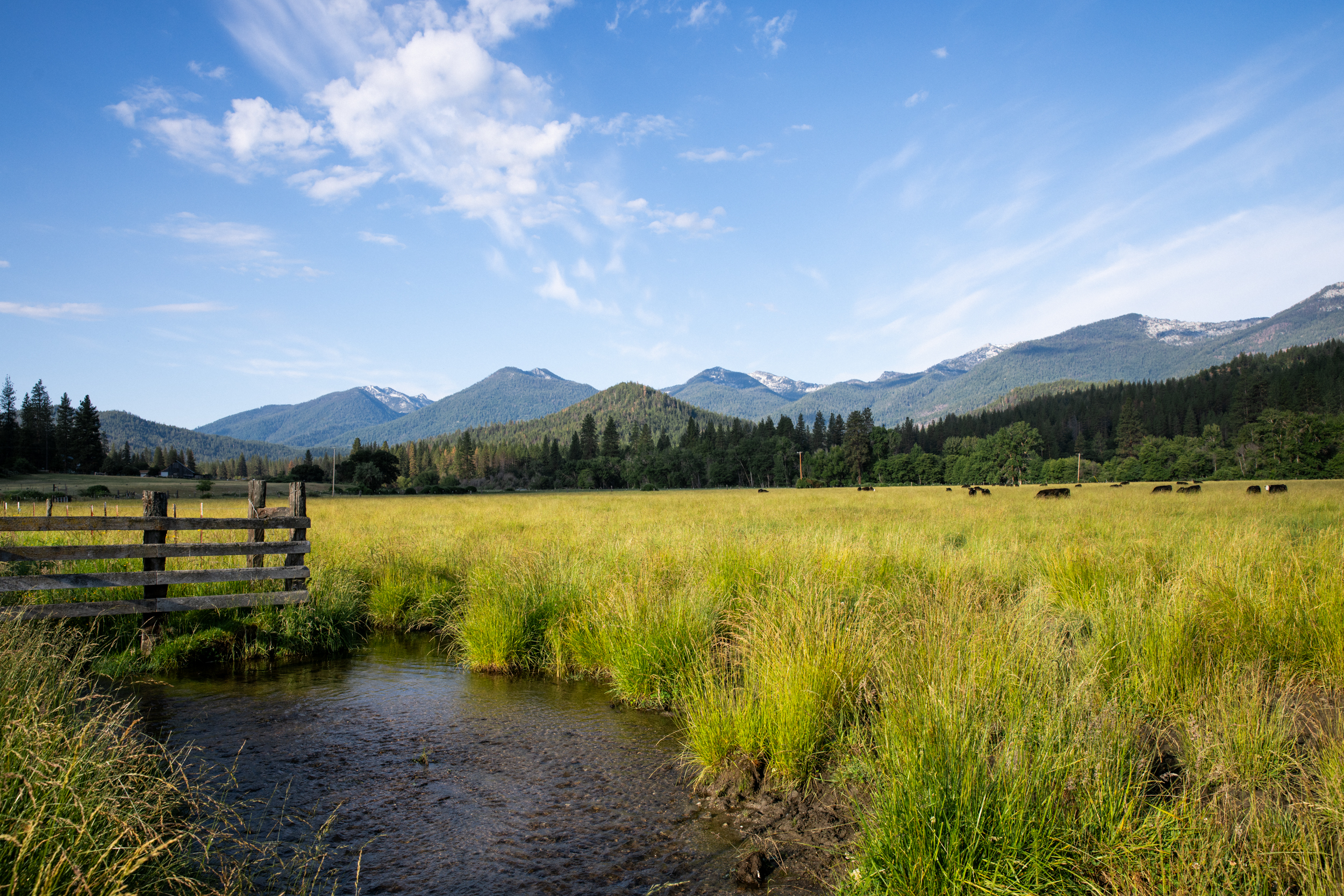
Miners Creek Ranch
In 2023, TNC became the proud owner of Miners Creek Ranch, a 389-acre property in the Klamath River watershed. The sale includes a senior water right and a mile of frontage on French Creek, one of the best locations for coho salmon nests, or “redds,” on the Scott River.
Our aim is to leave water in the creek so that freshwater species like coho have what they need to thrive during the dry summer months. Scientists predict that our actions could have population-level benefits for coho on the Scott River. We’ll also be supporting the development of protective flows that meet the needs of freshwater species in the region.
This acquisition was one of TNC California’s fastest deals, and it’s projects like these that showcase our ability to take action and get important work done.
Advocating for Nature
Another advantage to holding water rights is that it gives us a seat at the table with regulators, which allows us to contribute to solutions as they consider new requirements to leave flows instream. Using our water rights to reduce demand eases the regulatory burden felt by local communities.
By piloting water rights acquisitions in the Klamath Basin, we are showing other organizations how to employ this approach, with the goal of scaling it up wherever nature needs water.
A Monumental Dam Removal
On August 28th, 2024 the Klamath River became a free-flowing river for the first time in 100 years! Four large hydroelectric dams were removed, providing salmon access to more than 400 miles of habitat that had been previously unreachable. The removal of the dams on the Klamath was the culmination of more than 30 years of leadership and perseverance by the Klamath Basin tribes, NGOs and federal and state agencies.
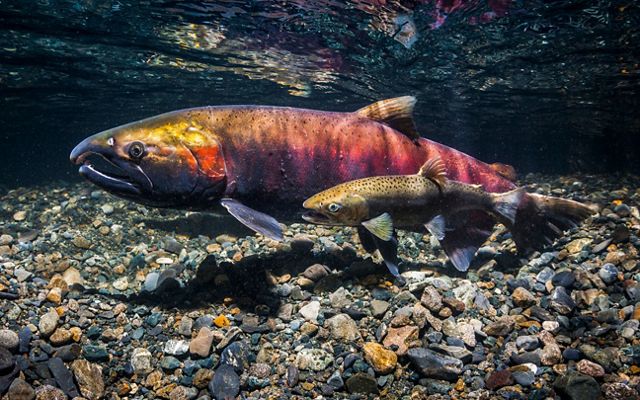
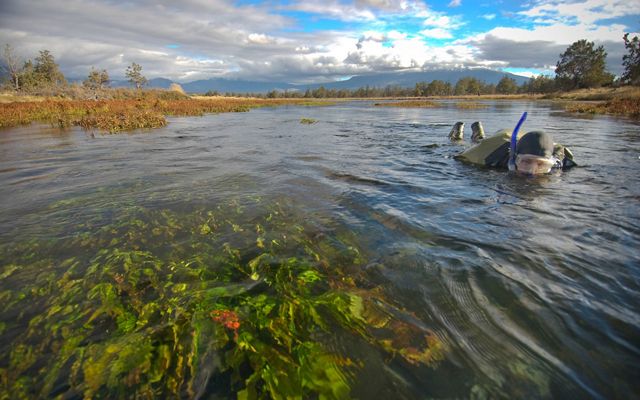
Benefiting People and Fish
Working in partnership with a number of organizations, our goal is to restore critical spawning and rearing streams and degraded streamside habitat in the Mid-Klamath Basin at Shasta River, Big Springs Creek and Parks Creek Ranch. These efforts could help revive California’s fishery as a source of wild, locally caught salmon—a $60-to-$100-million-per-year industry, and we have already made significant progress toward improving these habitats.
Salmon require cool water temperatures to spawn; hot irrigation-return flows and uncontrolled grazing in and around the Shasta River and Big Springs Creek caused water temperatures to reach lethally high levels in some areas. After the first year of restoration efforts as part of TNC’s Klamath Basin project, we saw a significant drop in temperature in Big Springs Creek—more than 13 degrees F lower than the high temperatures seen the year before.
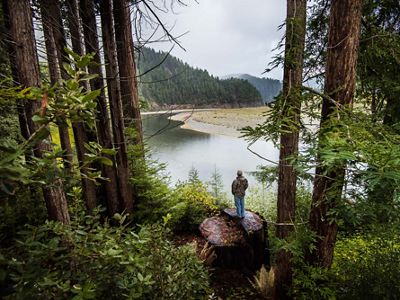
Our work included planting thousands of native trees and plants and promoting and implementing sustainable agriculture and ranching methods, such as fencing the waterways to protect them from grazing cattle. Through research and innovation, along with collaboration with the local community, we were able to address some of the region’s complex issues in ways that help preserve this special place for the benefit of all.
Along these lines, TNC’s working ranches—like the recently acquired Parks Creek Ranch—support the local agricultural economy and contribute to county tax rolls. They are a testament to the compatibility of conservation and ranching.
Partners
- Bureau of Reclamation
- California Department of Fish and Wildlife
- California Department of Water Resources
- California Natural Resources Agency
- California Trout
- California Wildlife Conservation Board
- Karuk Tribe
- National Fish and Wildlife Foundation
- National Oceanic Atmospheric Administration
- Natural Resources Conservation Service
- Quartz Valley Indian Reservation
- Regional Water Quality Control Board
- Scott River Watershed Council
- Shasta Valley Resource Conservation District
- Trout Unlimited
- US Fish and Wildlife Service
- Yurok Tribe
Opportunities for Visitors
Camp, hike, swim, raft, fish or view wildlife at one of the many local, state and national parks, including the Klamath National Forest and the Lower Klamath National Wildlife Refuge.
Make a Difference in California
Together, we can achieve transformative change on a scale that’s attainable—for the Lower Klamath Basin, for California, and for the world.
